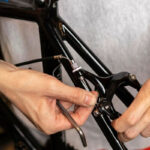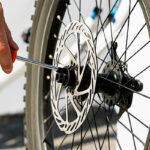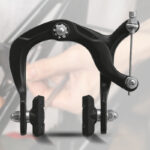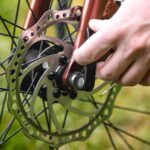Brake levers are essential components of a bicycle for controlling speed and ensuring safety. For cyclists, whether beginners or professionals, understanding how brake levers work is crucial for proper bicycle maintenance, thereby enhancing cycling safety and performance. For new riders, learning about brake levers is essential, and this blog will provide you with all the necessary knowledge on brake levers and how to choose them.
What Are Brake Levers?
Brake levers are parts found on the handlebars of your bicycle that enable you to control the brakes. When you push the brake lever, it moves a cable that connects to the brake pad on the wheel (mechanical brakes) or activates the hydraulic brake that slows the wheel by applying pressure to the brake pads. They are among the core components of the brake system that help determine, via the force you apply to the brake lever, how quickly you’ll stop.
Types of Brake Levers
Brake levers come in various designs, depending on the type of bike and brake system you have:
- Mechanical Brake Levers: These are most common and a cable system is used to work the brakes. Squeezing the brake lever tightens the actuating cable, pressing the brake pads onto the wheel rim or rotor.
- Hydraulic Brake Levers: Hydraulic systems use fluid to transfer pressure from the brake lever down to the brake calipers. These levers provide better braking force with lesser amount of force required and are most often seen in mountain bikes and high end roadsters.
- V-brake Levers: These levers are designed to work with V-brake systems and most commonly identified with mountain bikes as well as hybrids. They provide enhanced braking torque, making them suitable for off-road use.
- Drop Bar Brake Levers: These are used on road bikes that have drop handlebars. When paired with shift levers, they allow convenient operation with a thumb, even in an aerodynamic riding position.
Importance of Brake Levers in Bicycle Safety
Brake levers are mostly important to bicycle safety especially if you are cycling in traffic, on steep incline, or at a fast rate. A properly operating brake lever is finely adjustable so that depending on the pressure you apply, you can control how fast or smooth or abrupt your stop will be. Worn or poorly maintained levers increase the risk of extended stopping times or brake failure, or even dangerous failure of the brakes.
How to Select the Appropriate Brake Levers
Choosing the right brake lever depends on several factors:
- Brake Type: Make sure that you are using right brake levers from the compatible brake system of your bike. While mechanical levers are intended for cable operated brakes, hydraulic levers are intended for hydraulic disc brake systems.
- Handlebar Type: The choice of the handlebars determines how an individual shaped and styled these brake levers. For instance the flat bar bikes use the straight pull levers while road bikes use levers that operate alongside the gear shifters.
- Stopping Power: For greater stopping power in descending or off road cycling, hydraulic brake levers or V-brake-specific levers offer improved braking power with less effort.
Maintaining Your Brake Levers
Like any other part of your cycling equipment, it is important that you give time and effort into the proper maintenance of your brake levers. Mechanical brake levers require regular cleaning and lubrication to reduce cable friction and should be inspected for damage. On a hydraulic system, make sure to check the fluid levels and look for signs that there are leaks present.
Conclusion
Understanding and maintaining your bicycle’s brake levers is essential for a safe cycling experience. Whether it involves an older bike or adjusting a current one, choosing the right brake lever will help significantly. When adjusting these levers, it is important to use those that are compatible with the brake system used on your bike and handlebars to improve control and safety. Regular brake lever maintenance is key to staying safe on the road.
Read More About “Bicycle Brake Safety: How to Ensure your Brakes Are Always Ready”





